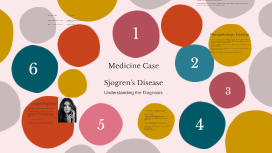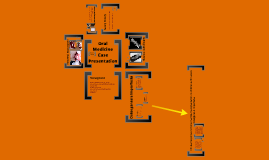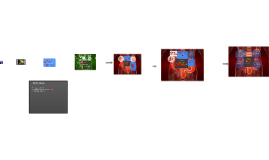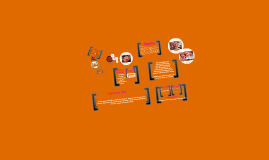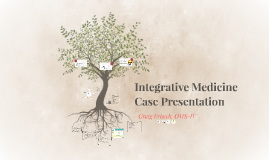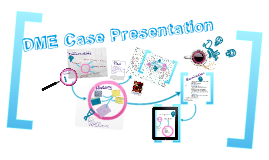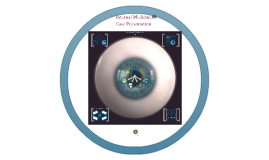Internal Medicine Case Presentation
Transcript: Review of Systems WBC: 18.4 RBC: 5.08 HGB: 13.4 HCT: 42.4 MCV: 83.5 MCH: 26.5 PLT: 353 NEUT: 83 LYMPH: 9 MONO: 8 swelling worse returns to UPH CT scan performed sinusitis orbital/periorbital cellulitis transferred to ASEM Surgeries Blood transfusions Accidents 2 weeks prior to admission: Sodium: 137 Potassium: 4.0 Chloride: 99 CO2: 31.2 BUN: 6 Creat: 0.8 Gluc: 124 Calcium: 9.3 Albumin: 3.4 Bronchial Asthma last exacerbation (2003) Chicken Pox (2011) Social History Childhood illnesses Diagnosis Treatment Immunizations "Se me hinchó el ojo izquierdo y no lo puedo abrir hace 3 dias" worsening headache eyelid swelling inability to open his eye taken to UPH, Toradol and Benadryl given Group I: preseptal cellulitis, and group II is orbital cellulitis. The remaining groups are all abscesses: group III is subperiosteal abscess, group IV is intraorbital abscess, and group V is cavernous sinus thrombosis (septic abscess). headaches facial tenderness dizziness returned to PCP prescribed:Amoxicillin, Mucinex, Loratidine Up to date by hx Vital Signs: T: 36.8 P: 89 R: 18 BP: 117/58 General: AAOx3, in no acute distress Head: atraumatic, normocephalic, tender to palpation in frontal area no bulges or masses, normal hair distribution. ENT: MOM, no pharyngeal exudates, clear TM Most common route of infection ethmoid sinusitis subperiosteal abscess 15-59% orbital abscess 24% vision loss cavernous sinus thrombophlebitis brain abscess CT - confirmation of clinical suspicion MRI- also helpful Venography- include when CST is suspected Complications Family History Feature Preseptal Cellulitis Orbital Cellulitis Proptosis - + Motility + +/- Pain on motion - + Orbital pain - + Vision Normal May be decreased Pupillary reaction + ± Chemosis Rare Common Corneal sensation + May be decreased Ophthalmoscopy Normal May be abnormal Systemic signs Mild Commonly severe 19 y/o M patient with past medical hx of Bronchial Asthma and allergic to ASA presents with swelling, redness of his left upper and lower eyelids since 3 days ago Past Medical History Laboratories 1 week prior to admission: Eyes: PERRLA, EOMI.Left upper and lower eyelid swelling and erythema, no eye proptosis, exudates, erythema or hemorrhages.Mild swelling starting in right eyelids. Sinuses: Tenderness upon palpation of maxillary and frontal sinuses Nodes: Non palpable or tender 6. RESPIRATORY: + hx of BA, URI symptoms past 2 weeks. - cough, dyspnea, orthopnea, history of tuberculosis or emphysema. 7. CARDIAC: -chest pain, tightness, palpitations and exercise intolerance. 8. GI: - N/V, constipation, diarrhea, heartburn, bloody stools, abdominal pain, food intolerance, changes in bowel habits. 9. GENITOURINARY: - polyuria, nocturia, incontinence, dysuria. 10. EXTREMITIES: - pain, loss of muscle strength, loss of sensation or difficulty moving Multivitamin by Mariana Mercader Pérez MS4 Preseptal Cellulitis Orbital Cellulitis HZV/VZV infection involving eye Tumors Trauma Insect bites Graves disease Cavernous sinus thrombosis Severe conjunctivitis Vasculitis Mucormycosis/ Aspergillosis Aspirin Medications ESR: 49 CRP: 142.7 BC: negative 48h Epidemiology Day of Admission Chief Complaint Evaluated by Ophta and ENT services Admitted to IM to treat with IV Antibiotics Any questions 3 days prior to admission: 1. GENERAL: + fever. - chills, night sweats, recent weight changes, fatigue, lethargy, dizziness, changes in appetite, difficulty sleeping or rashes. 2. HEAD: +headaches. -trauma to head, lightheadness. 3. EYES: + L eye redness, swelling, discomfort, tenderness to palpation, lacrimation. -pain on L eye motion, blurry vision, photophobia and decreased perception of colors; diplopia, floaters, use of contact lenses, recent trauma, blindness, or similar symptoms in the past. 4.EAR, NOSE, THROAT: - otorrhea, tinnitus, vertigo, hearing loss, rhinorrhea, epistaxis, dysphagia, odynophagia or hoarseness. 5. NECK: - lumps, enlarged nodes, tender nodes or difficulties in ranges of motion. Mother: Asthma Hospitalizations 2011 UPH Spontaneous Pneumothorax Chest tube Chicken Pox Pneumoniae bleeding pus secretion N/V use of contact lenses sick contacts pets similar previous episodes Imaging Physical Exam Allergies 11. HEMATOLOGIC: - anemia, easy bruising or bleeding. 12. ENDOCRINE: - polydipsia, polyphagia or polyuria, no history of thyroid disorders, recent weight changes, abdominal striae, difficulty concentrating, or any other endocrine abnormalities. 13. NEURO-PSYCHIATRIC: - seizures, paralysis, loss of consciousness, gait disturbances, speech, memory deficits, hallucinations, tremors, poor balance, loss of sensation or muscle strength and sphincter dysfunction. IV Antibiotics: None Vancomycin with 1 of the following: Ceftriaxone Cefotaxime Piperacillin-tazobactam Ampicillin-sulbactam For a total of at least two to three weeks HPI Surgery: abscess > 10mm HPI Father DMII HTN OSA Spina Bifida Oculta Genitalia and Rectum: not evaluated; patient refused exam. Extremities: BL upper and lower






